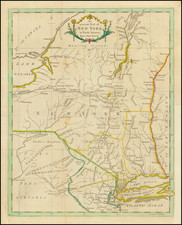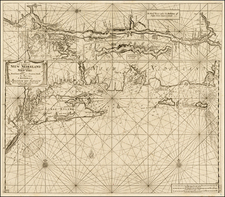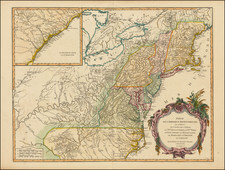Fine Early View of West Point by William James Bennett -- Dedicated To General Sylvanus Thayer
Dramatic view of the Hudson and West Point: focusing 'on the beauty of the Hudson River and the mountains that border it on either side ... a celebration of nature, highlighting the ever-changing drama staged by mountains, water, and sky' (Deak).
This view is dedicated by Bennett to Colonel and Brevet Brigadier General Sylvanus Thayer (1785 -1872) also known as "the Father of West Point," an early superintendent of the United States Military Academy at West Point and an early advocate of engineering education in the United States. Sayer was appointed Superintendent by President James Monroe in 1817, following the resignation of Captain Alden Partridge. Colonel Thayer's time at West Point ended with his resignation in 1833, after a disagreement with President Andrew Jackson. He was elected an Associate Fellow of the American Academy of Arts and Sciences in 1834.
Under Thayer's leadership, the Academy became the nation's first college of engineering. While at West Point Thayer established numerous traditions and policies which are still in use at West Point. These include the values of honor and responsibility, strict mental and physical discipline, the demerit system, summer encampment, high academic standards and the requirement that cadets maintain outstanding military bearing and appearance at all times.
William James Bennett (c. 1787-1844) was an English born artist, who received his training at the Royal Academy. He moved to the United States in 1826, and where he became a well accomplished maker of views of American cities, including the Hudson Valley Region, Niagara Falls, New York, Charleston, and Buffalo.
With the arrival of William Bennett and several other émigré artists such as William Guy Wall, and John Hill, the quality of aquatint engraving in America was elevated to a level equaling, or perhaps even surpassing, that of European printmakers. This print was published at the beginning of an important period in the history of American topographical-view making.
As noted by Deak:
Bennett created four prints after paintings by George Cooke (1793-1849) in his series of views of American cities ... American-born George Cooke was a prolific painter of portraits, views, and historical subjects. He painted this scene of West Point in 1832 after he had left New York ... for .. the Catskill mountains' (Deak, William James Bennett p.78). 'Cooke benefited from the remarkable craftsmanship of ... Bennett, who endowed the rendering with a radiant quality' (Deak Picturing America p.277).









![[ Queen Anne's War - Failed Attack on French Canada -- Petition to Queen Anne from the Colony of New York seeking reimbursement for a failed conquest of New France during Queen Anne's War ] To the Queens most Excellent Majesty . . . 1709](https://storage.googleapis.com/raremaps/img/small/85409.jpg)




![[East Coast & Canada ] Tierra Nueva](https://storage.googleapis.com/raremaps/img/small/104342.jpg)